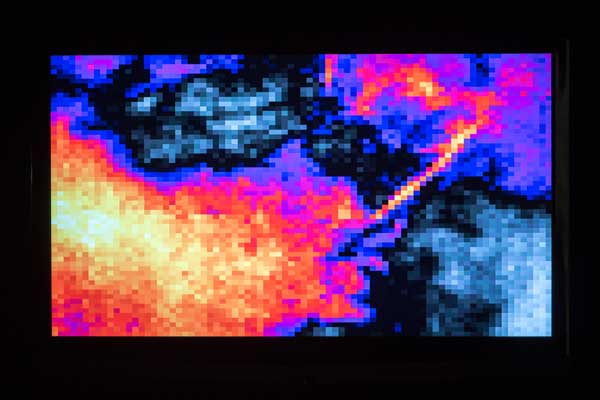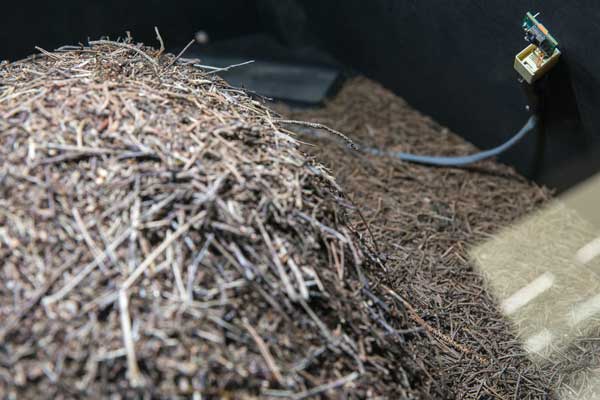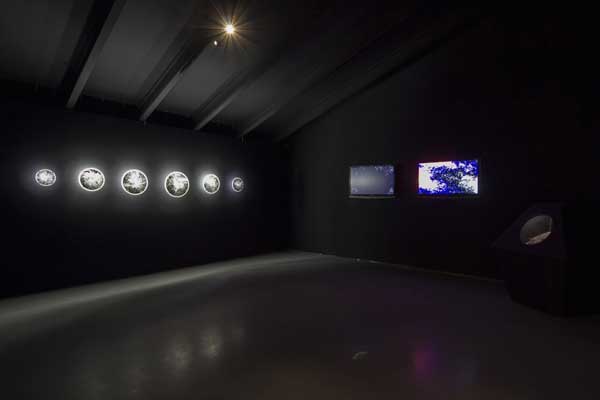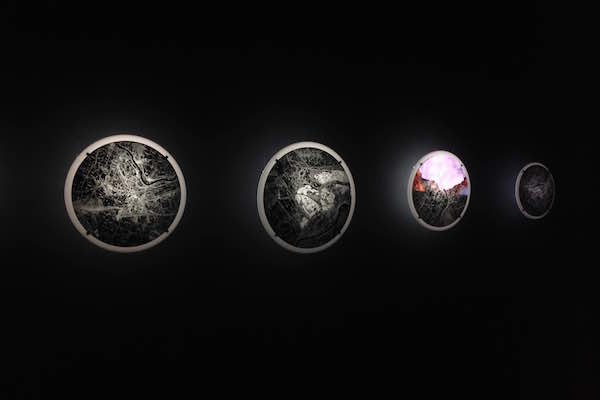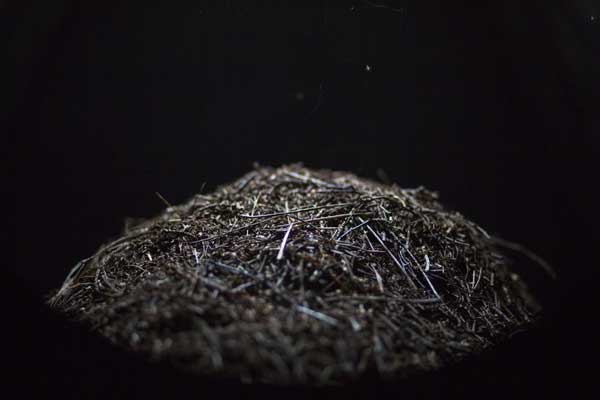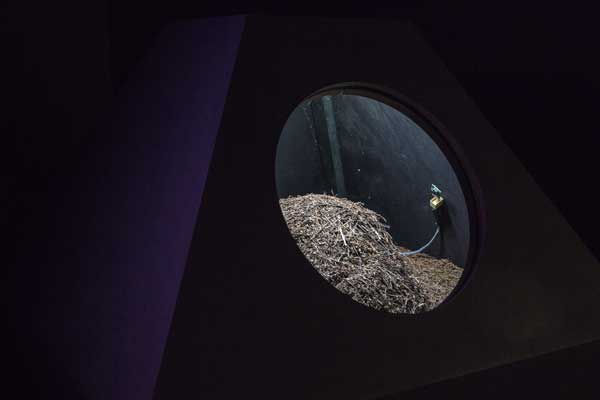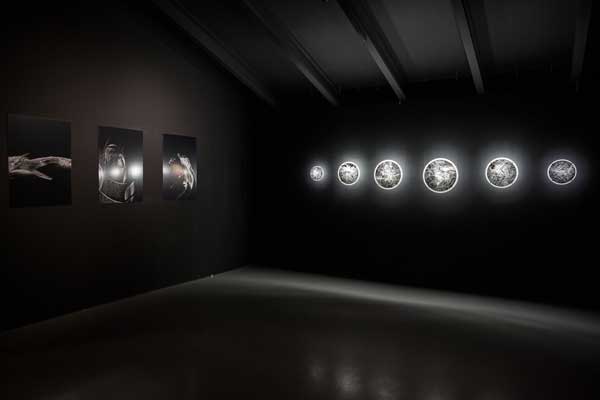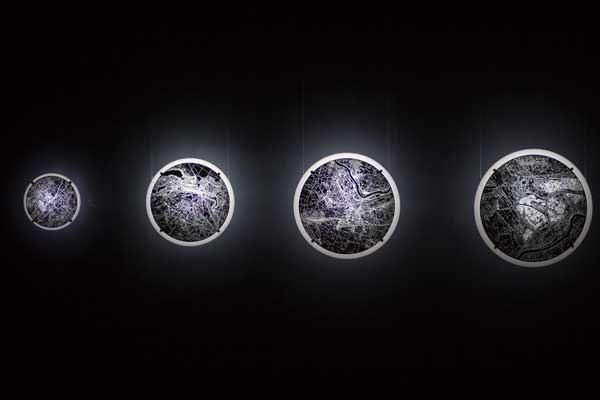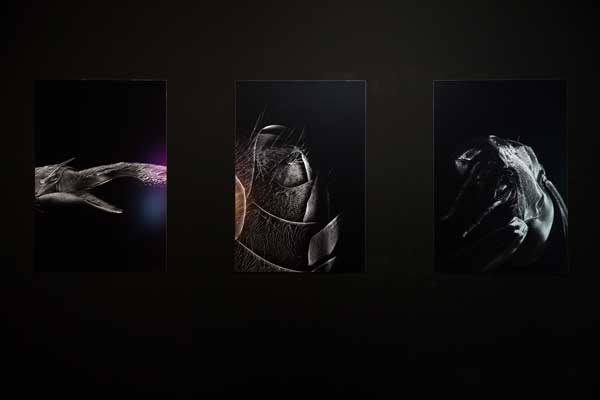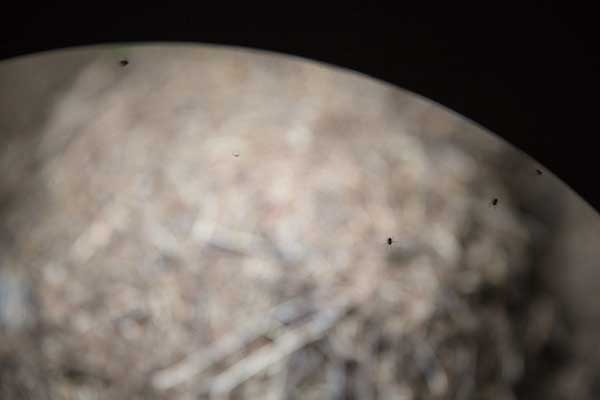Thermotaxis
hibernation vessel...thermoacoustic holobiont...biodynamic poikilotherms
Thermotaxis is a thermoacoustic installation based on the metabolic rhythms of redwood ants and their symbionts. An anthill architecture rests inside a custom-designed winter vessel, which is augmented with a self-regulated cooling system, and monitored with a thermal camera using computer vision for transforming data into acoustic patterns. The live composition is generated by thermal fluctuations from the insulating nest material, and the metabolism of microbial and invertebrate communities. The redwood ants, species Formica rufa, along with their invertebrate guests are ancient inhabitants of European forests, and constitute one of the most important terrestrial holobiont across the whole Palearctic ecosystem.
Thermotaxis offers a different aesthetic evaluation of the invertebrate terrestrial life in European forests, as a nonhuman association based on social alterity and metabolic rhythms. On the one hand, it raises awareness to the incessant carbon waste emissions due to the expansion of European cities into ecological habitats, that Leviathan perpetually devouring forests, while at the same time speculating with the hibernation vessel as an impending future model for a more-than-human social habitat. On the other hand, the thermoacoustics of this invertebrate holobiont presents synaesthetic transductions of thermal forces, as a novel art paradigm based on metabolic rhythms, for valuing the acoustic properties of European forest materials, as mediated and used by nonhuman beings.
Thermotaxis serves as a more-than-human model for the global warming crisis. I propose more corporeal and multispecies intimacy. The anthill is in reality a living architecture created by the syncopated metabolic rhythms of over 49 different species subsisting in antagonistic intimacy. While moving always towards warmer gradients, the heat efficiency is overall increased by a performance of weaving different invertebrate bodies and matter together as a response to climate change.
We are Formica rufa. We are predators, with the potential to control outbreaks of pests, but also creating soil heterogeneity, contributing to seed dispersal, and clearing forest litter. We change the structure and property of forest humus, spawning microbial communities, and transforming the availability and accessibility of resources for other lifeforms. We dominate territories and expand our turf, much like human cities do, offering opportunities for cooperation, reconstruction and cohabitation. However, unlike the waves of human-made urbanisation and its industrial carbon emissions in the Anthropocene, we contribute to sustainable antagonisms that keep European forests healthy.
Exhibitions:
(2017) National Art Gallery, Vilnius
Residency funded by: Ministerium für Familie, Kinder, Jugend, Kultur und Sport des Landes Nordrhein-Westfalen
Commissioned artwork for the National Art Gallery, Vilnius
With the collaboration of: Technarium, Vilnius *Albertas Mickėna*, Center for Physical Sciences and Technology, Vilnius *Dr. Gediminas Račiukaitis*, Mathematics and Informatics Faculty, Vilnius University *Dr. Vytautas Valaitis*, Rupert Centre for Art, Vilnius, the ants of the Valakupiai forest of Vilnius

